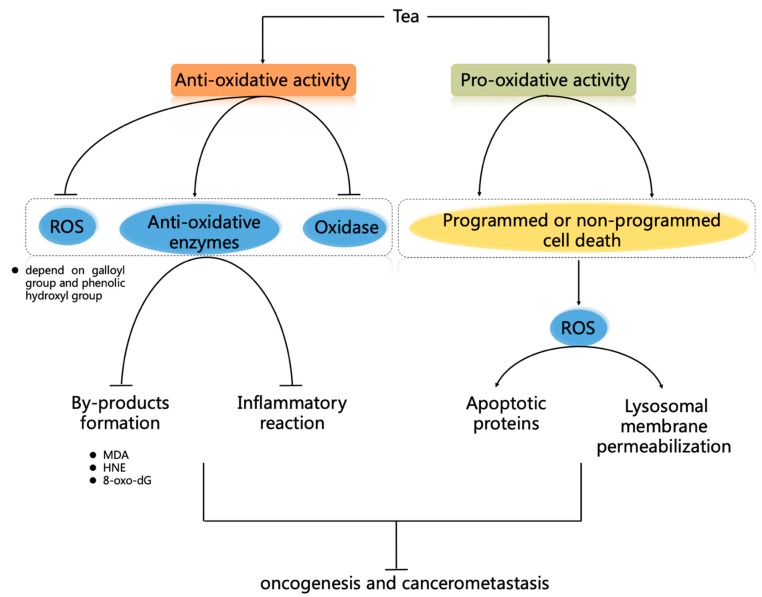Figure 2.
Anti-cancer mechanisms of tea by regulating ROS homeostasis. Anti-oxidative activity of tea. Tea polyphenols can directly scavenge ROS by depending on its B and D ring of the galloyl group, and the phenolic hydroxyl group. Tea can also indirectly eliminate ROS through improving anti-oxidative enzymes activities, decreasing the effects of the oxidases, decreasing by-products (including MDA, HNE, and 8-oxo-dG) formation, and decreasing the inflammatory reaction, which involves the regulation of Nrf2 and NF-κB signaling pathways. Moreover, tea can regulate the drug-metabolizing pathways or become a chelating agent to scavenge ROS. Pro-oxidative activity of tea. With pro-oxidative activity, tea can selectively induce programmed cell death (PCD) or non-PCD of cancer cells, and it is considered as a potential anti-cancer candidate. PCD of cancer cells includes ROS-induced apoptosis or autophagy by mitochondrial dysfunction, the reduction of Trx/TrxR, and ROS-induced hyperactivation of p38, JNK, and p53, which activate the expression of downstream apoptotic proteins (such as Bax, caspase-3, and caspase-9). In addition, tea can induce non-PCD of cancer cells through ROS-induced DNA degradation by endogenous copper and ROS-mediated lysosomal membrane permeabilization.

